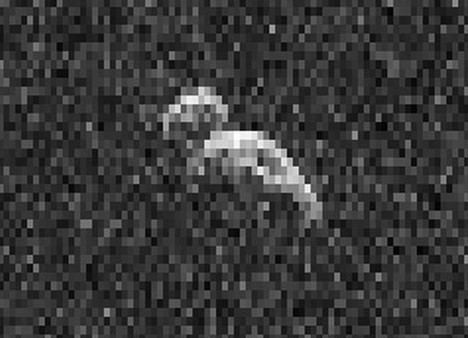Discovered by LINEAR Discovery date 23 February 2006 Alternative names 2006 DP14 Discovered 23 February 2006 Inclination 11.787° | Discovery site Lincoln Lab's ETS MPC designation (388188) 2006 DP14 Minor planet category Apollo · NEO · PHA Aphelion 2.43 m Argument of perihelion 59.206° | |
 | ||
Discoverer Lincoln Near-Earth Asteroid Research Similar 2000 EM26, 2014 OL339, 2013 YP139, 2014 HQ124, (86039) 1999 NC43 | ||
(388188) 2006 DP14 is a highly eccentric asteroid, classified as near-Earth object and potentially hazardous asteroid of the Apollo group, approximately 400 meters in diameter. It was discovered by LINEAR at Lincoln Lab's ETS in Socorro, New Mexico, on 23 February 2006. On 10 February 2014, it passed 6.2 lunar distances from Earth.
The stony S-type asteroid orbits the Sun at a distance of 0.3–2.4 AU once every 1 years and 7 months (583 days). Its orbit has an eccentricity of 0.78 and an inclination of 12° with respect to the ecliptic. As no precoveries were taken, the body's observation arc begins with its discovery observation in 2006. The asteroid has an Earth minimum orbit intersection distance of 0.0162 AU (2,420,000 km), which corresponds to the close approach distance observed in February 2014.
On the night of February 11, 2014 NASA scientists conducted a radar imaging session using the 70-meter dish at Goldstone Observatory. These observations, using delay-Doppler radar imaging, revealed a 400×200 meters peanut-like shape, while the Collaborative Asteroid Lightcurve Link calculates a diameter of almost 500 meters, based on an assumed standard albedo for stony asteroids of 0.20 and an absolute magnitude of 18.9. Amateur and professional astronomers helped track the asteroid in the preceding days, so they would know just where to point the large antenna.
Goldstone's radiometric observations also gave a rotation period of approximately 6 hours. Photometric follow-up observations led to two light-curves that gave a refined period of 5.77 and 5.78 hours with a high brightness variation of 1.05 and 0.9, respectively (U=3/3).
